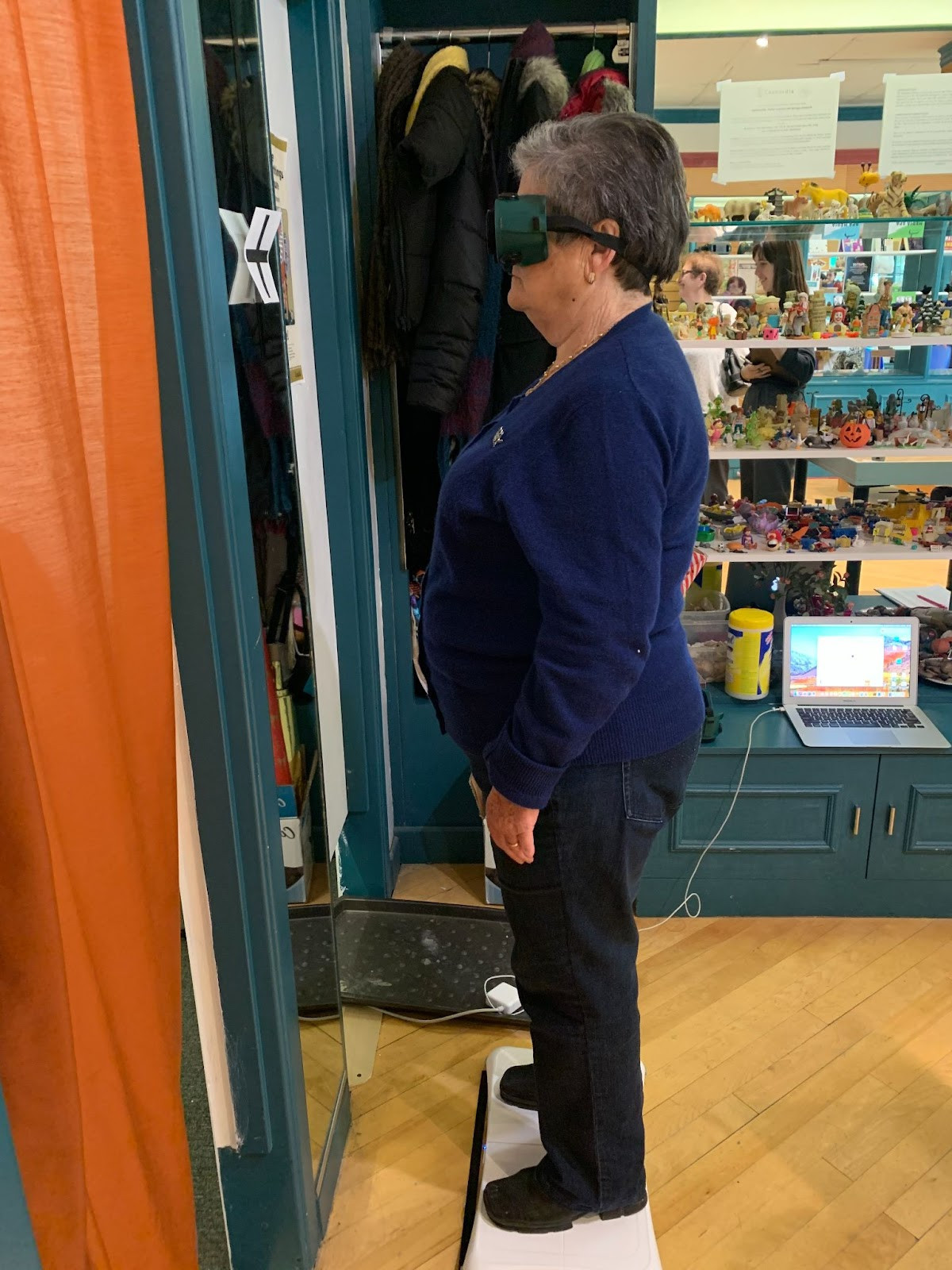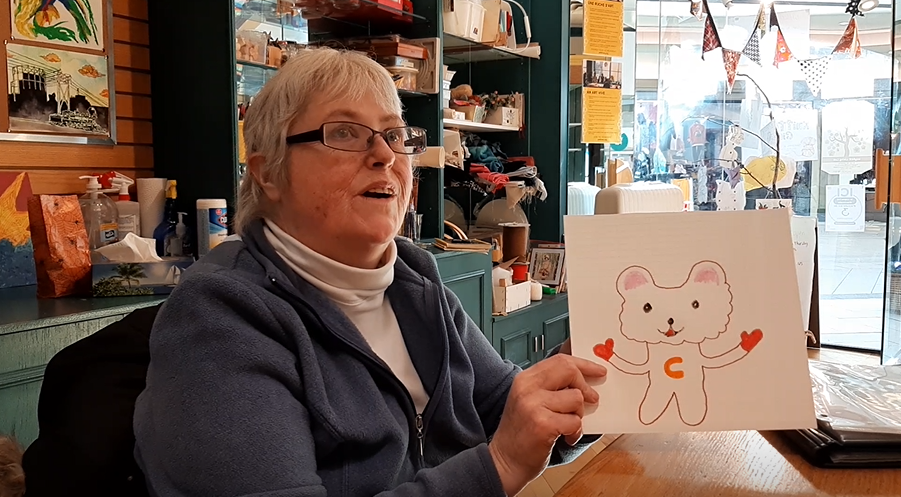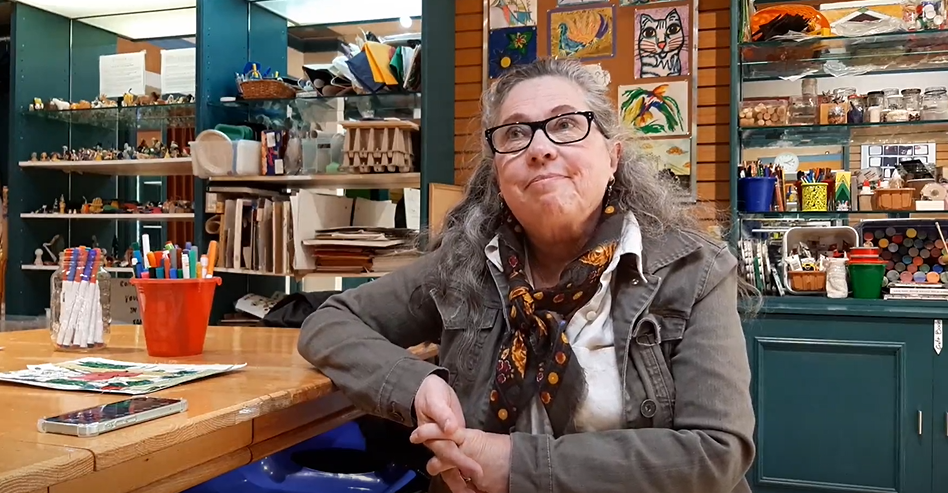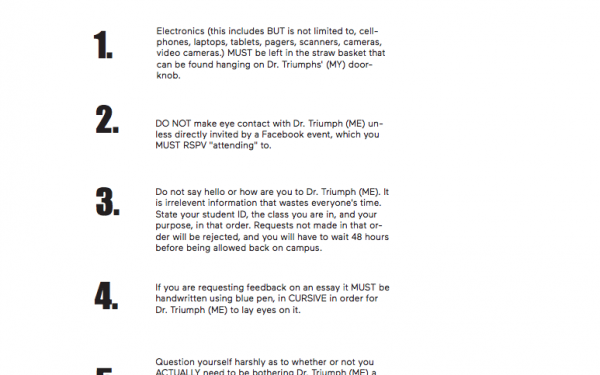Meet me at the mall, for art, research and science
Volunteer facilitators set up tables with several arts and crafts items in the atrium space of the Cavendish Mall.
Concordia’s Center for Research on Aging teams up with the Art Hives to bring research labs to the community
Imagine going to a mall on a weekday afternoon. You are walking through the atrium that is echoing pop music, ‘For Sale’ boards desperately trying to attract customers and you find an artsy research lab with Concordia’s name on it.
The storefront is Concordia's Creative engAGE Living Lab (ELL), a research lab operated under Concordia’s Centre for Research on Aging (engAGE)’s ‘Meet me at the mall’ project. The lab was established at the Cavendish mall in Côte Saint-Luc to help the researchers and students connect with the community and to collect the required data for their theses on topics related to old age.
“Come check your balance” reads a sign at the lab, storefront C-14 at the Cavendish mall. What sounds like a banking slogan is actually a check-up involving a Wii Balance board, some dance moves and other distractions designed to check people’s equilibrium, attention spans, hearing levels and even eyesight, especially of older adults above 60.

“We kind of made it this fun way of having a check-up. How’s your balance, how’s your vision and how’s your hearing doing,” said Berkley Petersen, a master student in Psychology at Concordia. She has collected a considerable amount of data at the lab to study how factors like hearing loss might play a role in the stability of one’s balance, especially in older adults, for her thesis.
One in every six Canadians has a speech, language or hearing disorder, making them the third most prevalent chronic disability among older adults, according to a report by Speech-language and Audiology Canada and Canada Geriatrics Society. Most of the older adults who checked their balance didn’t know that they had a hearing problem, said Petersen.
The community research method adopted by the engAGE lab aims at bridging the gap in finding solutions to widespread problems that society is unaware of from the ground up. Petersen along with other researchers used portable testing devices, to check balance and hearing. These portable devices did the work of big expensive harnessed lab equipment, demonstrating the workable nature of such community-based research labs.
“The purpose of the lab is to conduct research on aging in a more realistic environment,” said Karen Li, Petersen’s psychology professor at Concordia and one of the seven founding researchers of the engAGE Lab.
“The idea there was, first of all, to take research to the community and embed ourselves in the community,” said Li. The benefit of having interactive labs in community spaces is that “the participants skip all the hassle of visiting the university campus, figuring out the lab building, trying to find a parking space and making multiple trips,” she added. Li hopes that the community-driven research lab setting will be a better way to address the salient issues in people’s daily lives.
To strengthen the bond between the community and researchers, and to increase the engagement, the engAGE Lab collaborated with The Art Hives Network. The network aims to build human connections through art and art-making, which is believed to be an innate human behavior. It is this aspect the engAGE Lab strivesed to harness for the “community” part of their research method.
Through this collaboration, the lab offers interactive games, art activities, art therapy sessions, community-building exercises and many more. Their hope is to have more potential participants contributing to other research projects with ease.
Lisa Potter, a 56-year-old tech-savvy art enthusiast, joined one of the free art therapy sessions offered by the lab in the Quartier Cavendish Mall.
“Art therapy took away my anxiety. Like no anxiety at all during the COVID,” said Potter. Acknowledging the dire effects of isolation on older adults—especially during lockdown—the lab came up with an online program called engAGE Living Lab Digital Era Response .
“Art has helped me in every way. I am not angry anymore, I am very calm. It’s one of my go-to techniques,” said Potter as she continued showing her digital art collection which she created through the ELLDER online program.
Potter is one of the older adults who benefit from the engAGE- Art Hive collaboration. Potter, through her art, expresses her set of values of helping people, giving back to society, being compassionate and being supportive. Thus, she agreed to participate in in-depth research projects at Concordia.

“Instead of becoming researchers gathering information, we would offer something in return,” said Janis Timm-Bottos, the chief investigator of the engAGE Lab. She is also an associate professor in the Department of Creative Arts Therapies at Concordia, as well as the founder of The Art Hives Network, one of the reasons for their collaboration.

Community stories like Lisa Potter’s are the driving force behind engAGE Lab’s efforts to make research more accessible and approachable to the public for which it is meant.
“The hope is that we can begin to create a social infrastructure for people to have free spaces to interact with each other and with the university,” said Timm-Bottos. She and her team are excited for the future where malls are transformed to better accommodate public initiatives and be more than just shopping places.
“And my belief is we need everyone at the table,” added Timm-Bottos. “We need all people with life experiences, with different backgrounds and with their own professional lives...So that we can start together solving these problems.”
“That is the future,” said Syeda Nayab Bukhari. She is the Program Director of the Telehealth Intervention Program for Isolated Older Adults at Jewish General Hospital’s Department of Psychiatry. To make research more accessible, she said that the focus should be on multiple research locations and experimenting with different combinations of research methodologies.
Bukhari added that new methodologies, such as labs in malls and community spaces, carry two major limitations. The first is the availability of sustainable funding. The second is following ethical standards and guidelines when dealing with walk-in participants.
“We see that engAGE living lab is a pioneer in doing this experiment…we also as a lab could do is to find a way to collaborate with them,” Bukhari said. She suggests that two or three research teams should come together pooling financial and human resources to continue experimenting with research methods. This way she believes there would be enough room for errors.
“As researchers, we have to go do these kinds of experiments where not only one segment in the community, but all segments in the community can come and see your work and be part of it, according to their convenience and interest,” she continued.
“I don’t see these as challenges but I see them as opportunities for labs to develop this and not let it become a challenge or a limitation,” said Bukhari, hoping these experiments will align science with the community's needs.

1_600_375_90_s_c1.jpg)


